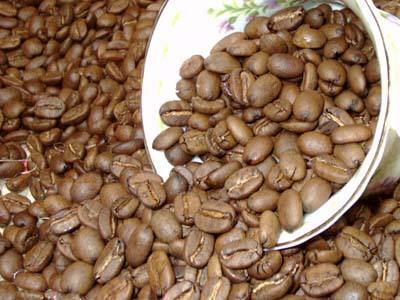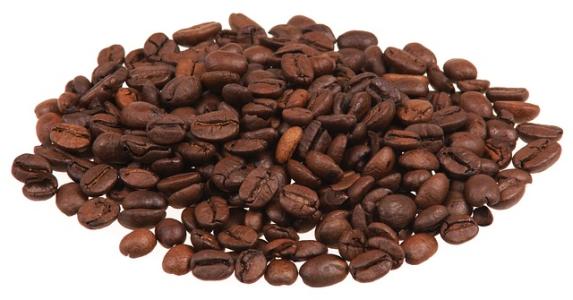Nicaraguan coffee producing area, how to taste Nicaraguan coffee
Follow the caf é (Wechat official account vdailycom) and found that Beautiful Cafe opened a small shop of its own.
[Nicaraguan coffee producing area]
Nicaragua (Nicaragua)
Famous representative coffee: Nicaragua (Nicaragua)
Nicaraguan coffee, which is mainly produced in the central and northern parts of the country, is characterized by shade planting and coffee beans are washed and dried in the sun. Generally speaking, Nicaraguan coffee is less distinctive, so Nicaraguan beans are often used as mixed coffee or instant coffee.

But high-quality Nicaraguan beans, such as Maragogipe, a very large coffee bean called elephant beans, are highly valued. This coffee has a well-balanced taste, without the distinct acidity that other Central American coffees often have, but it has a clear taste and excellent aroma. This round and soft texture also makes it a unique show in the more moderate evaluation of Guatemalan coffee and is loved by many people.
[product name] Nicaraguan Caturra coffee beans
[baking degree] recommended baking degree city+
Nicaragua / Madriz producing area
[sea pull] more than 1400m
[manor] Finca E1 Suyatal 2009 Coe Cup test winning manor beans
[raw bean treatment] washing and fermentation, the latter part of the scaffolding is insolated.
Nicaragua has a low flavor, chocolate, caramel sweetness, obvious almond flavor and bright sour taste, which is different from the rising tone of bright fruit acid in Central America. The coffee planting ecology of Nicaragua has a unique environment, spread all over the fertile volcanic soil, coupled with shading planting methods, has established a good growth physique, so that Nicaraguan beans not only have rich mellow but also fragrant taste, in the eyes of international coffee experts as high-quality, and gradually attracted the attention of the boutique industry.
Madriz is an ecological coffee with a very hard shell. In the pure natural planting environment, it uses more complex operations to maintain the delicate aroma and taste of the coffee; it is produced in northern Nicaragua between Matagalpa and Jinotega, with an average annual rainfall of 1500-1700mm and a temperature of 20-29 degrees Celsius. All the coffee is selected manually, and the labor and time cost is much higher than that of ordinary beans.
How to taste Nicaraguan coffee
Nicaraguan coffee has excellent quality and taste, and it is also among the top coffee beans in the world and enjoys a good reputation. In terms of flavor characteristics, Nicaraguan coffee has moderate acidity, mild taste and delicious aroma.
Nicaragua is located in central Central America, bordered by the Pacific Ocean to the west and the Caribbean Sea to the east. The highlands in the north and the coastal plains in the east are part of the Central American volcanic belt. The eastern plain is high-temperature and rainy, with a tropical maritime climate. The suitable climate provides an excellent growth environment for the cultivation of coffee.
High-quality Nicaraguan coffee, grown in the north and middle of the country. Coffee is a pillar industry in Nicaragua, producing nearly 100,000 tons of coffee beans every year. Many people who have tasted Nicaraguan coffee usually think that it is no different from Salvadoran coffee or Honduran coffee. It is full-bodied, smooth and delicate, with a slightly bitter finish, like a faint taste in a wine.
When tasting Nicaraguan coffee, it is best to drink cold water first, so that you can better feel its mellow taste. Drink coffee while it is hot, because the tannins in Nicaraguan coffee are easy to change during cooling, and the taste becomes sour, which will affect the flavor of the coffee. You can add the right amount of sugar, and then add cream.
Important Notice :
前街咖啡 FrontStreet Coffee has moved to new addredd:
FrontStreet Coffee Address: 315,Donghua East Road,GuangZhou
Tel:020 38364473
- Prev

What kind of beans is Nicaragua? Nicaraguan coffee is introduced.
Follow the comment (Wechat official account vdailycom) found that the beautiful cafe opened a small shop of its own Nicaragua is what beans Nicaraguan coffee has a wide range of flavor attributes. Some coffee has a high alcohol thickness like Mexican coffee, while others have bright acidity like African coffee. Most of the coffee varieties used in Nicaraguan coffee are handed down
- Next

Brazilian coffee bean brand, introduction to the characteristics of Brazilian coffee beans
Following Cafe (Wechat official account vdailycom) found that Fairview Cafe opened a small shop of its own Brazilian coffee bean brands Brazil: Santos, Bahia, Cerrado, Mogiana the characteristics of Brazilian coffee beans Brazilian coffee beans refer to all coffee beans grown in Brazil, except for more than three companies.
Related
- Detailed explanation of Jadeite planting Land in Panamanian Jadeite Manor introduction to the grading system of Jadeite competitive bidding, Red bid, Green bid and Rose Summer
- Story of Coffee planting in Brenka region of Costa Rica Stonehenge Manor anaerobic heavy honey treatment of flavor mouth
- What's on the barrel of Blue Mountain Coffee beans?
- Can American coffee also pull flowers? How to use hot American style to pull out a good-looking pattern?
- Can you make a cold extract with coffee beans? What is the right proportion for cold-extracted coffee formula?
- Indonesian PWN Gold Mandrine Coffee Origin Features Flavor How to Chong? Mandolin coffee is American.
- A brief introduction to the flavor characteristics of Brazilian yellow bourbon coffee beans
- What is the effect of different water quality on the flavor of cold-extracted coffee? What kind of water is best for brewing coffee?
- Why do you think of Rose Summer whenever you mention Panamanian coffee?
- Introduction to the characteristics of authentic blue mountain coffee bean producing areas? What is the CIB Coffee Authority in Jamaica?

